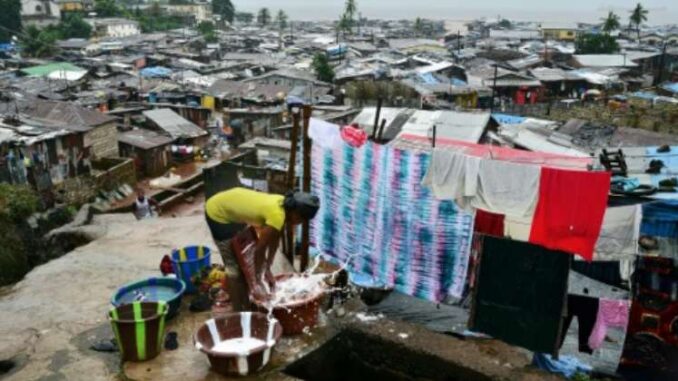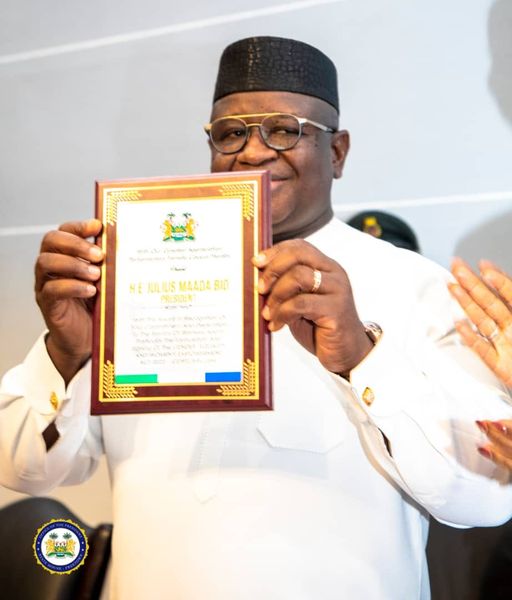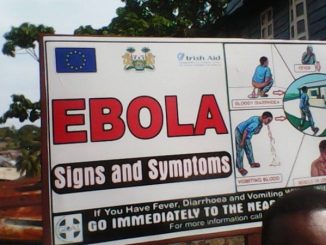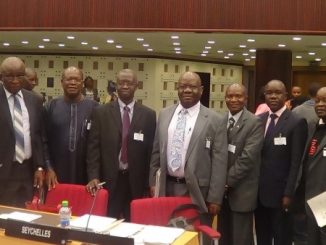
SIERRA LEONE remains among the 10 poorest nations in the world, according to the 2023 rankings by worldpopulationreview.com
IS PRESIDENT BIO MERELY SHOWBOATING ?
Poorest Countries in the World 2023 – Ranked
WORLDOPULATIONREVIEW .COM HAS RELEASED ITS 2023 RANKINGS
Here we provided the list of Top 10 Poorest Countries in the World 2023, in which we have included the most poorest countries in the world with the lowest GNI Per Capita.
by Maivizhi A | Updated Mar 21, 2023

Poorest Countries in the World 2023
Many of the world’s poorest nations possess well-developed agricultural infrastructure and are home to industries such as mining and manufacturing. However, due to a lack of technology, raw materials, and services, these countries often rely on imports from developed and developing nations. Over the last seven decades, countries rich in resources such as oil and energy have transformed from underdeveloped to developed nations. The countries with the lowest GDP per capita in 2023 are Burundi ($308), Sierra Leone ($472), and Malawi ($483), with most of the world’s poorest countries located in Africa, along with a few countries from Asia and the Caribbean region. However, some nations, including Afghanistan, Lebanon, Sri Lanka, and Pakistan, are notable exceptions due to war or economic mismanagement.
Although Africa’s economy is currently growing rapidly due to investments and industrialization, many African nations still rely heavily on China for the import of goods such as electronics, clothing, food, and household items, as local production is often limited. However, some African nations have opened their doors to foreign direct investment and industrialization, indicating that Africa is full of potential, with a large percentage of the population consisting of young people under the age of 20.
Top 10 Poor Countries in the World
Here, we have tabulated the Top 10 Poor countries in the World as of 2023.
| S.No | Poor Countries in the World | GNI Per Capita of the countries |
| 1 | Burundi | $270 |
| 2 | Somalia | $310 |
| 3 | Mozambique | $460 |
| 4 | Madagascar | $480 |
| 5 | Sierra Leone | $490 |
| 6 | Afghanistan | $500 |
| 7 | Central African Republic | $510 |
| 8 | Liberia | $530 |
| 9 | Niger | $540 |
| 10 | Democratic Republic of Congo | $550 |
You can check below to know about the descriptions of the above countries.
1. Burundi
Burundi has a population of approximately 12 million people, and is one of the world’s poorest countries with a GDP per capita of $308 in 2023. The majority of the population relies on subsistence farming, with coffee being the country’s largest export. Burundi is also known for its production of tea, cotton, and other agricultural products.
Burundi has experienced political instability and violence since gaining independence from Belgium in 1962. The country has gone through several coups and a civil war that lasted from 1993 to 2005, resulting in the deaths of an estimated 300,000 people. Despite a peace agreement signed in 2005, the country has continued to experience sporadic violence, with human rights abuses and political repression being reported by international organizations.
The country is known for its diverse wildlife, including elephants, lions, and hippos, as well as its beautiful landscapes, including Lake Tanganyika, which is the second-deepest lake in the world. However, the country faces numerous challenges, including poverty, food insecurity, and a lack of access to basic services such as healthcare and education.

2. Somalia
Somalia is a country located in the Horn of Africa, with a population of approximately 16 million people. It has struggled with political instability, civil conflict, and poverty for several decades.
According to the United Nations, Somalia is one of the poorest and least developed countries in the world, with more than half of its population living below the poverty line. The country has also experienced frequent droughts and famines, which have further exacerbated its poverty crisis.
In terms of poverty, the state of Jubaland is often cited as the poorest region in Somalia. Jubaland is located in the southern part of the country, and it has been severely affected by years of conflict, political instability, and poor governance. The region has also been hit hard by droughts, which have led to food shortages and displacement of local communities.
Despite these challenges, efforts are being made to address poverty and improve the lives of people in Somalia. The government, international organizations, and non-governmental organizations (NGOs) are working to provide aid, support economic development, and improve access to education and healthcare. However, progress has been slow, and much work remains to be done to lift the people of Somalia out of poverty.

3. Mozambique
Mozambique is a country located in southeastern Africa, and it is considered one of the poorest countries in the world. The country has a population of over 31 million people, and poverty and inequality are significant challenges that many Mozambicans face.
The economy of Mozambique is primarily based on agriculture, with many people working in subsistence farming. However, the country has been affected by natural disasters such as droughts and floods, which have severely impacted agriculture and the economy.
Mozambique also experienced a long and devastating civil war that lasted from 1977 to 1992, which resulted in the destruction of infrastructure, displacement of millions of people, and the loss of human lives.
As a result of these challenges, poverty is widespread in Mozambique, with over half of the population living below the poverty line. Access to basic services, such as education, healthcare, and clean water, is limited, particularly in rural areas.

4. Madagascar
Madagascar is an island country located off the coast of Southeast Africa. It is one of the poorest countries in the world, with a high level of poverty and a low human development index. According to the World Bank, over 70% of the population lives below the poverty line, and the majority of the people rely on subsistence agriculture for their livelihood.
Madagascar faces many challenges, including deforestation, soil erosion, and frequent natural disasters such as cyclones and droughts. These factors have contributed to a decline in agricultural productivity and have made it difficult for the country to provide adequate food security for its population.
In addition, Madagascar has a high rate of malnutrition and limited access to healthcare, which has resulted in a relatively low life expectancy. Despite these challenges, the country has made progress in recent years, with increasing economic growth and improvements in education and healthcare. However, much work remains to be done to lift Madagascar out of poverty and promote sustainable development.

5. Sierra Leone
The country has a population of approximately 8 million people and its capital and largest city is Freetown.
Sierra Leone has a complex history marked by colonization, slavery, and a brutal civil war that lasted from 1991 to 2002. The country is known for its rich natural resources, including diamonds, gold, and other minerals. However, despite its wealth in natural resources, Sierra Leone remains one of the poorest countries in the world.
Poverty and unemployment are major issues in Sierra Leone, and the country ranks low on the Human Development Index. Access to education and healthcare is limited, and many people live in rural areas without access to basic services like clean water and sanitation.
Sierra Leone has made progress in recent years, particularly in rebuilding after the civil war and addressing health issues like Ebola. However, challenges still remain, including corruption, political instability, and a struggling economy. The country relies heavily on foreign aid and international support to address its ongoing challenges.

6. Afghanistan
Afghanistan is considered one of the poorest countries in the world due to a combination of factors.
Firstly, the country has been affected by decades of conflict, starting with the Soviet invasion in 1979, followed by a civil war in the 1990s, and the US-led invasion in 2001. This has led to widespread destruction of infrastructure and institutions, displacement of people, and loss of life.
Secondly, Afghanistan is a landlocked country with limited natural resources, which has hindered its economic growth. The agriculture sector is the backbone of the economy, but it is highly vulnerable to natural disasters and climate change. The country is also heavily dependent on foreign aid, which has been volatile and unpredictable.
Thirdly, Afghanistan faces significant governance and corruption challenges. The country ranks poorly in measures of government effectiveness, rule of law, and control of corruption, which have undermined the delivery of basic services and impeded economic development.

7. Central African Republic
According to World Bank data from 2020, the Central African Republic is currently one of the poorest countries in the world. The country has been grappling with various challenges, including decades of political instability, insecurity, and conflict, which have had a significant impact on its economy and social development. The majority of the population lives in poverty, and basic services such as healthcare, education, and infrastructure are limited. The country also faces environmental challenges such as deforestation and desertification, which further exacerbate its development challenges.

8. Liberia
Liberia is a country located on the west coast of Africa. It is known for its rich cultural heritage and history, as well as its struggles with poverty and political instability.
Liberia was founded by freed slaves from the United States in the early 19th century and was later colonized by American and European companies who exploited the country’s natural resources, particularly rubber and timber. This exploitation contributed to economic inequality and political instability that persists to this day.
Liberia has been plagued by civil war and political instability for much of its history. The country endured two civil wars in the 1980s and 1990s, resulting in the deaths of over 250,000 people and the displacement of millions. In recent years, Liberia has made progress in stabilizing its government and economy, but the country still faces significant challenges related to poverty, corruption, and weak infrastructure.
Liberia is one of the poorest countries in the world, with a large percentage of the population living below the poverty line. The country’s economy is largely dependent on agriculture and natural resource extraction, but these sectors are often hampered by poor infrastructure, limited access to credit, and political instability. Additionally, Liberia has been hard hit by the Ebola virus outbreak in 2014, which further weakened the country’s economy and health system.

9. Niger
Niger has a population of around 24 million people and is one of the poorest countries in the world. It ranks last on the United Nations Development Programme’s (UNDP) Human Development Index (HDI), which measures life expectancy, education, and income.
Agriculture is the mainstay of Niger’s economy, accounting for more than 40% of the country’s gross domestic product (GDP) and employing nearly 80% of the labor force. The country is one of the world’s leading producers of uranium, which is a significant source of government revenue. Niger also has vast reserves of oil, but the production is limited and insufficient to meet domestic demand.
Niger faces several challenges, including a high fertility rate, rapid population growth, low literacy rates, and a lack of infrastructure, which hinders economic development. The country also suffers from frequent droughts, food shortages, and periodic locust invasions, which exacerbate food insecurity and poverty.
In recent years, Niger has made some progress in improving its health and education systems, reducing infant and child mortality rates, and increasing access to clean water. However, the country still faces significant challenges in achieving sustainable economic growth and reducing poverty.

10. Democratic Republic of the Congo
The Democratic Republic of the Congo (DRC) is a country located in central Africa. It is the second-largest country in Africa by land area and the eleventh-largest in the world. The country is home to a diverse population of over 100 million people, with over 200 ethnic groups and more than 700 languages spoken.
The DRC has a rich natural resource base, including vast reserves of copper, cobalt, gold, diamonds, and other minerals. However, the country has experienced decades of political instability, conflict, and economic mismanagement that have hindered its development.
The DRC has been the site of numerous armed conflicts, including the ongoing conflict in the east of the country, which has led to the displacement of millions of people. The conflict has also been fueled by the exploitation of the country’s mineral resources, which have been used to finance armed groups.
The DRC is one of the poorest countries in the world, with a low human development index ranking and a high poverty rate. The country faces significant challenges in providing basic services such as healthcare and education to its population, as well as in maintaining infrastructure and addressing issues related to governance and corruption. Despite these challenges, the DRC has made progress in recent years, with a growing economy and improvements in some social indicators.

What is the Poorest Country in the World?
In the past, present-day Rwanda and Burundi were used as sources of labor for the exploitation of the vast agricultural and mining areas of the Belgian Congo to the west and British colonies in the east. However, after gaining independence in 1962, they were reduced to small, overcrowded, and landlocked micro-states within their borders.
Burundi has experienced several military regimes since independence, which have been successful in seizing state resources, while ordinary citizens, especially rural farmers, have suffered the consequences of civil war. The division between military elites and rural farmers, known as the “people of the hills,” goes beyond ethnic and regional differences. While the peasantry continues to provide almost all of the resources for the party-state, most agrarian policy decisions are made without their input, even at the grassroots level where party delegates, often peasants, carry out directives. The country’s poor socio-economic performance can be attributed to conflict and elite corruption.
Conclusion
Overall, Poverty remains a significant challenge for many countries around the world, particularly in Africa, with Burundi, Somalia, and Mozambique being the poorest countries in the world in 2023. Despite the challenges that these countries face, efforts are being made to address poverty and improve the lives of people through international aid and investment, as well as the work of governments, NGOs, and other organizations. Although progress has been slow in some cases, there is hope that with continued effort and investment, poverty can be reduced, and the lives of people in these countries can be improved.
worldpopulationreview.com




